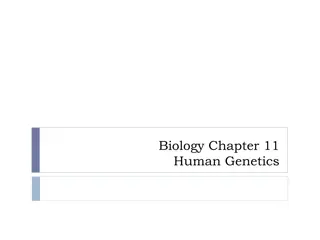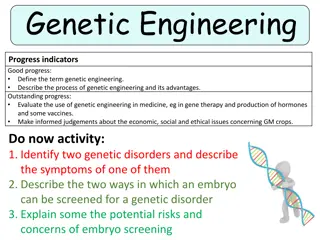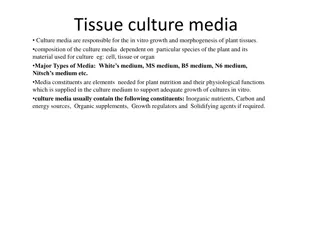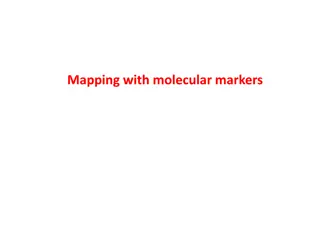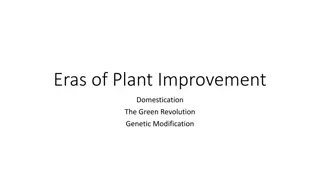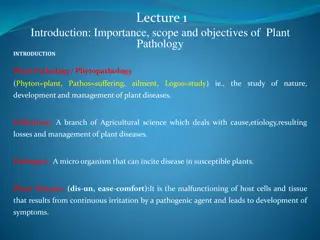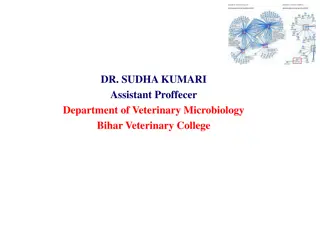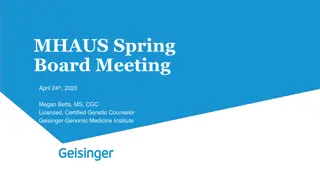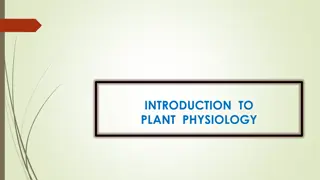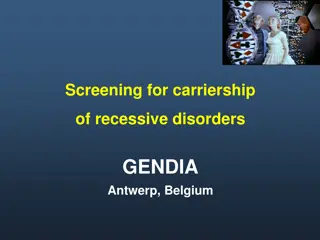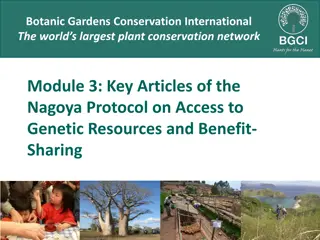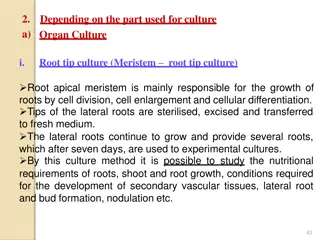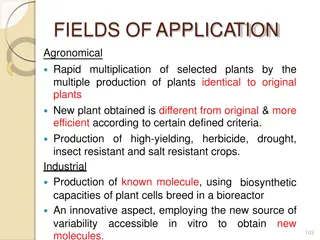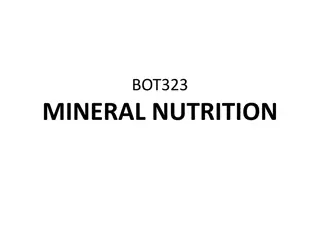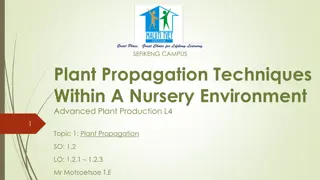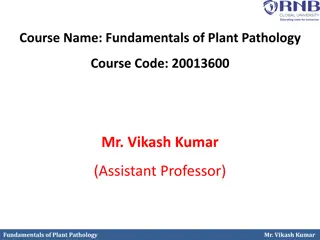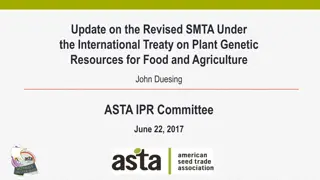The MLS & SMTA in Plant Genetic Resources
The Multilateral System (MLS) under the International Treaty on Plant Genetic Resources for Food and Agriculture (the Treaty) facilitates access to plant genetic resources through the Standard Material Transfer Agreement (SMTA). Learn about what is covered by the MLS and its accompanying SMTA, including crop varieties, collections, and more. Discover the rules governing SMTA transfers and the obligations for reporting and sharing information. Explore the scope of the MLS and what it does not cover.
Download Presentation

Please find below an Image/Link to download the presentation.
The content on the website is provided AS IS for your information and personal use only. It may not be sold, licensed, or shared on other websites without obtaining consent from the author.If you encounter any issues during the download, it is possible that the publisher has removed the file from their server.
You are allowed to download the files provided on this website for personal or commercial use, subject to the condition that they are used lawfully. All files are the property of their respective owners.
The content on the website is provided AS IS for your information and personal use only. It may not be sold, licensed, or shared on other websites without obtaining consent from the author.
E N D
Presentation Transcript
What is the MLS & its SMTA? Developed by International Treaty on Plant Genetic Resources for Food & Agriculture (the Treaty) under the UN Food and Agriculture Organization (FAO) The Treaty establishes a multilateral system (MLS) for facilitated access to plant genetic resources for food and agriculture (PGRFA) and sharing benefits arising from their use Access to PGRFA in the MLS is via the SMTA, a legally-binding contract with pre-negotiated terms under the Treaty. SMTA must accompany each transfer of covered PGRFA materials
What is included in the MLS & covered by its SMTA? Over 60 food & feed crops listed in Annex 1 of the Treaty. PGRFA in the International Agricultural Research Center Collections PGRFA ex situ collections under management and control of national governments and in the public domain PGRFA donated or available to the MLS by public or private entities
What does the MLS NOT cover? Crops not listed in Annex 1 of the Treaty, unless the owner of the PGRFA places them under the MLS. PGRFA found in situ Chemical, pharmaceutical or other non- food or non-feed uses of PGRFA Public collections not under the management and control of national governments and in the public domain, or private collections
What are the SMTA rules? Transfer of PGRFA covered by the SMTA must be reported to the Treaty All non-confidential information resulting from using PGRFA must be made available to the MLS Research & breeding materials that incorporate PGRFA must be exchanged under the terms of the SMTA The full text of the SMTA is available at ftp://ftp.fao.org/ag/agp/planttreaty/agreements/smta/SMTAe.pdf
ONP authorization is required to place SMTA material in the National Plant Germplasm System (NPGS) Check with your RL, National Program Leader (NPL) & TTC
In general, PGRFA accompanied by the SMTA are not incorporated into ARS breeding programs Materials bred from publically available germplasm (ARS germplasm) crossed with germplasm covered by the SMTA becomes SMTA-covered germplasm If an ARS breeding program incorporates germplasm covered by the SMTA, then it is not publically available without restrictions Check with your RL, National Program Leader (NPL) & TTC if exceptions are sought
What is the procedure for seeking permission to use SMTA material in an ARS breeding program? SY / RL / NPL decide if SMTA material should be used SY contacts TTC; TTC sends SMTA to OTT for processing OTT signs with NPL approval TTC send approved SMTA to SY If germplasm/cultivar is released that incorporates SMTA germplasm, that is stated in any release or distribution notice



